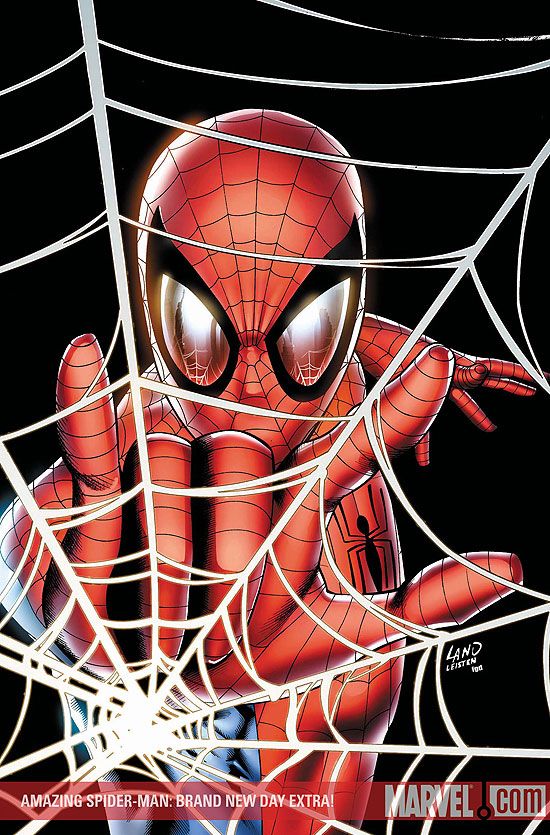Much like the Spider-Man Free Comic Book Day offering from 2007, this issue features three stories by three different creative teams, two of which tease some upcoming plotline in "Amazing Spider-Man." You get to the end of the first story, for example, and it says, "Hammerhead Returns in Amazing Spider-Man #575 -- This October!" The last one ends almost the same way, with an announcement about an upcoming story arc and when it begins. Only the middle story neglects such announcements, largely because it's a Peter Parker/Harry Osborn relationship story, and it would be silly to write, "Harry and Peter Continue to Argue and then Make Up in Amazing Spider-Man #572 -- and Every Issue!" But even though this comic seems designed to promote upcoming issues, it's a pretty good comic on its own. The three stories are each very different, and they all show the better side of the Brand New Day Spider-Man. These kinds of stories could probably have been told during the previous era, but they weren't. And now they are. And I think that's a good thing.
The first story is the Joe Kelly/Chris Bachalo Hammerhead story which gives us, basically, Hammerhead's origin. I've been reading about Hammerhead since the 1970s, and I've never seen him portrayed as anything but a stereotypical gangster with the added bonus of a freakish metal skull. Kelly and Bachalo do more to round out his character than anyone I've ever seen. I'm sure I missed more than a few Hammerhead stories over the years, but Kelly and Bachalo seem to have a new take on the character. It's Chris Bachalo, so the art is a bit hard to follow at times. As much as I like his design sense and the drawings in the panels, I think his storytelling can go in too many directions at once, and that absolutely happens here. It doesn't help that Kelly's story involves multiple time frames, and the jumps forward and backward (although signified by color shifts) are a bit chaotic under Bachalo's pencil. But the story's still a good one, giving a fragmented perspective on what is essentially a fragmented ego in Hammerhead. And his gangster cliche persona is shattered by the end of the story, setting him up as a more interesting threat for future Spidey tales.
The second story is the weakest, written by Zeb Wells and drawn by Patrick Olliffe. Wells includes some funny bits -- as he usually does -- and the entire premise of the story (Peter Parker showing up at semi-formal party wearing the Spider-Man mask as a bandana because of a run-in with the sticky Trapster) is a nice visual gag, but Olliffe is just not in the same league as the other two artists in the book. I know he did a well-received run on "The Untold Tales of Spider-Man" in the 1990s, but his character poses are stiff and he can't capture the facial expressions he needs to for the story to work. The art drags down the story, unfortunately, especially when compared to Bachalo or Marcos Martin.
Martin, who draws the third and final story, from Marc Guggenheim's script, is the best of the bunch. He's much more streamlined and clear than Bachalo and more expressive and stylish than Olliffe. I'd love to see him draw every issue of "Amazing Spider-Man," honestly, and although his work in this issue isn't as inventive as other work I've seen from him, it's very sleek and well-paced. I also like the final story a lot. It's one of those "superheroes on trial" stories, but it's handled in a way I've never seen before with Matt Murdock using some legal tactics that probably make no sense in the real world, but make perfect sense in the Marvel Universe. The interplay between Murdock and Spider-Man is spot on and the ending, while not shocking at all, is satisfying. Even though it's apparently a lead-in to an upcoming story, it works as a stand-alone vignette.
If you've been on the "Brand New Day" bandwagon, you won't want to miss this issue, since it's filled with stories that aren't just filler. If you haven't yet sampled this new direction in which Spider-Man's been headed, you could do a lot worse than this comic. It's worth a look.

